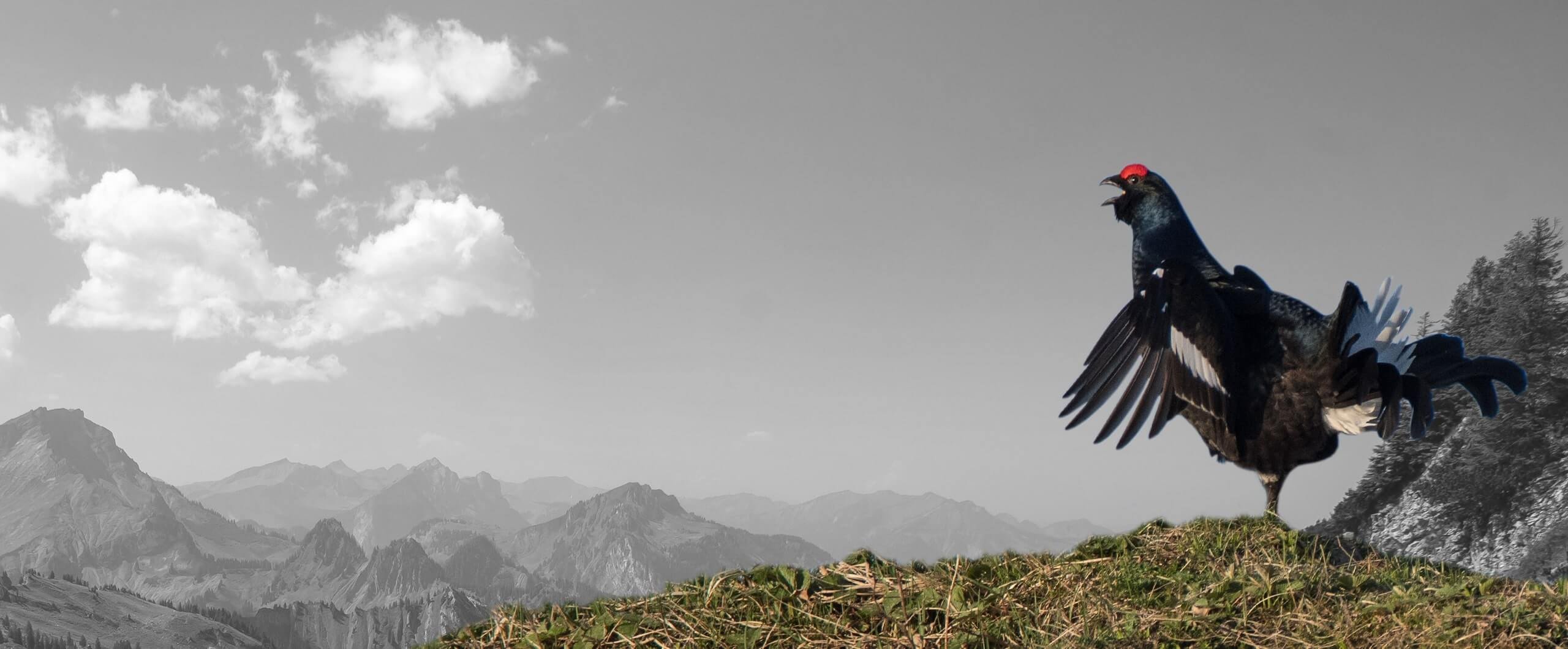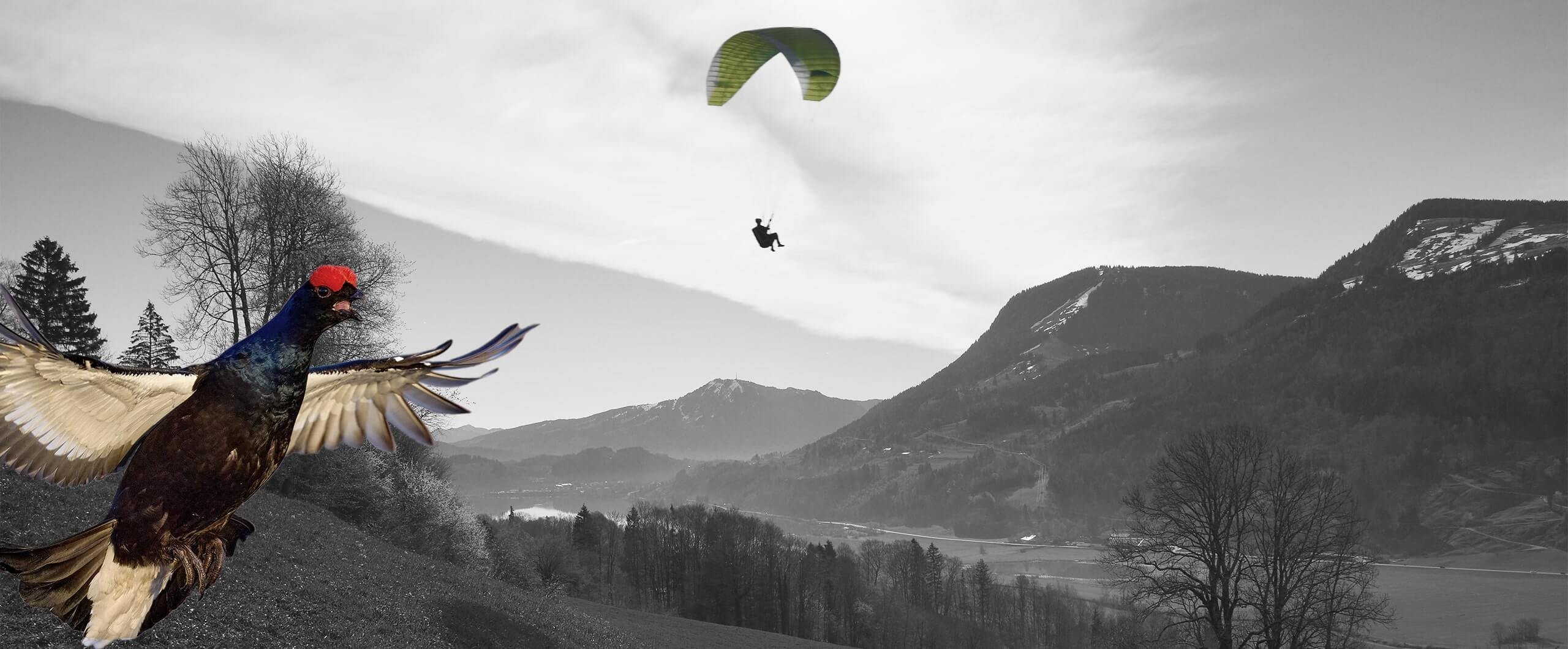
Black Grouse
(Tetrao tetrix)
Profile
- Family: Grouse
- Size: 35 – 41 cm (comparable to a domestic chicken, rooster significantly larger than the hen).
- Weight: 750 – 1.400 g
- Courtship and breeding season: end of March to beginning of July
- Population: approx. 2,000 animals in Germany
- Status: Classification 2 (critically endangered) on the Red List Germany
Habitat
90 percent of the black grouse population in Germany is found in the Alpine region. The black grouse feels particularly at home in the well-structured krummholz zone (open, loose and low bush and tree structures). During the mating season, the animals stay on short-grassed areas and moor soils. In winter, however, the black grouse retreat to wooded areas.
Nutrition
The black grouse needs a well-developed dwarf shrub layer of blueberries, bog bilberries and alpine roses, as it feeds largely on their leaves, buds and fruits. In winter, it is even content with low-energy shoots and buds of deciduous and coniferous trees.
Juveniles feed on protein insects and worms.
Behavior
The black grouse is faithful to its territory – it stays within a radius of no more than four kilometers all year round. Although it can fly well, it usually stays on the ground to forage for food. It is active mainly in the early morning and late afternoon hours. The rest of the day it spends resting. In winter, it then stays in a warming burrow to conserve valuable energy.
A very special spectacle is shown during the courtship: From the end of March, black grouse gather in the courtship arena, where they perform impressive courtship dances and engage in exhibition fights. Watching from the front row are the black hens, who then choose their favorite.
Endangerment
The endangerment of the black grouse is mainly due to the loss of its habitats: The draining of peatlands, industrial peat cutting, and the afforestation of peatlands and heathlands all contribute to this.
Intensive grazing and over-fertilization may result in clutch and chick losses and adverse vegetation change. But also the abandonment of alpine areas can result in a population decline due to the loss of mosaic-like short-grass areas.
Eine sehr große Gefahr ist auch der alpine Sport im Allgäu: Skipisten und Kunstschneeanlagen werden gebaut und die Rückzugsgebiete des Birkhuhns werden von Skitourengehern und Schneeschuhwanderern durchschritten. Birkhühner verlassen bei einer Störung fluchtartig ihre Höhle. Einmal aufgescheucht verbringen die Tiere den Rest des Tages oft im Freien – Kälte, Schnee und Sturm ausgesetzt. Dies hat vor allem bei wiederholtem Auftreten eine massive Schwächung der Vögel zur Folge.Alpine sports in the Allgäu region also pose a very great threat: ski slopes and artificial snow facilities are being built and the black grouse's retreats are being traversed by ski tourers and snowshoe hikers. When disturbed, black grouse flee their den. Once startled, the animals often spend the rest of the day outdoors - exposed to cold, snow and storms. This results in massive weakening of the birds, especially when repeated.
